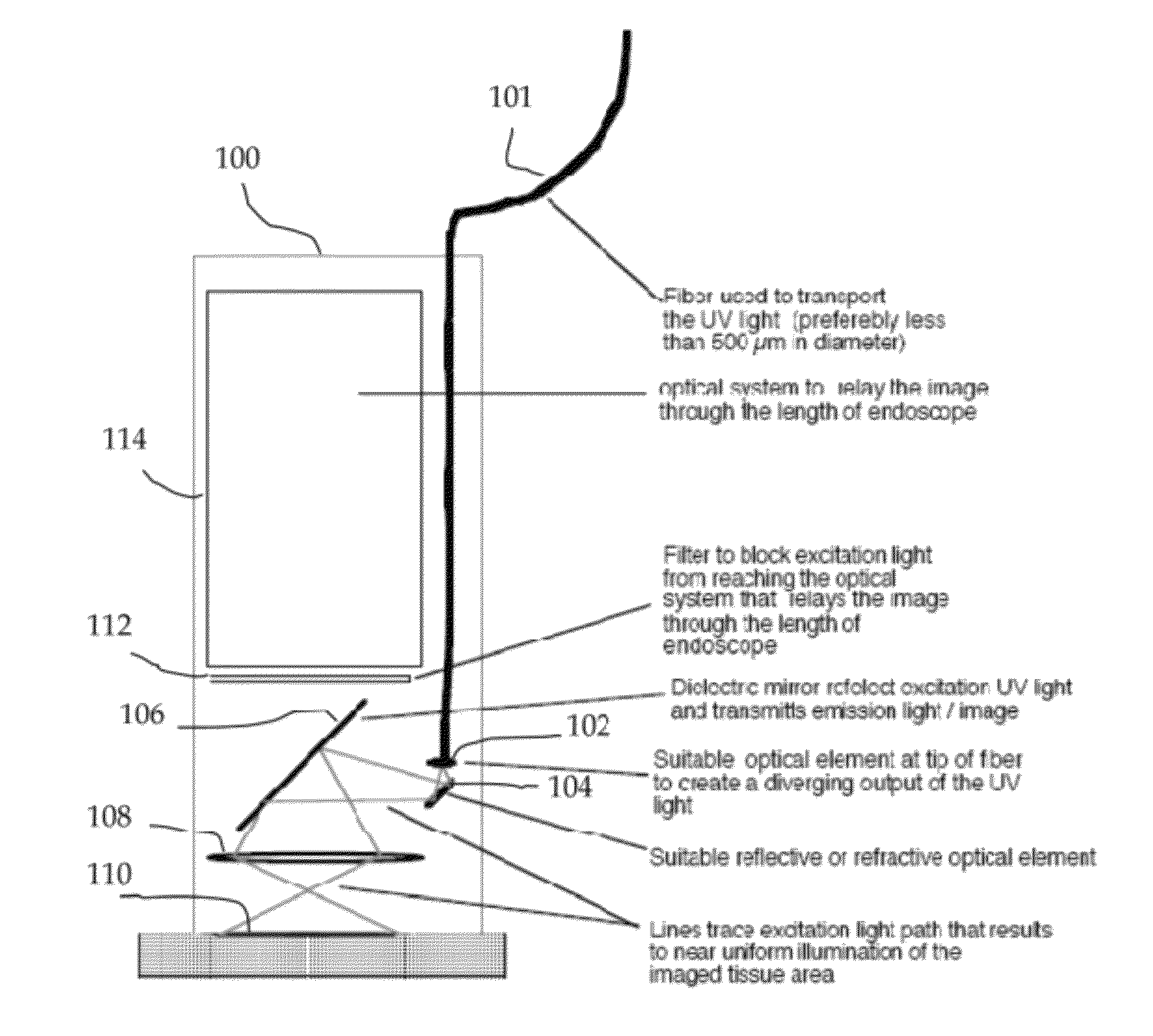In vivo spectral micro-imaging of tissue
a tissue and spectral micro-imaging technology, applied in the field of medical diagnostics for tissue investigation, can solve the problems of poor prognosis, difficulty in early detection, and onset is often asymptomatic, and achieve the effects of less time, high contrast, and higher image contras
- Summary
- Abstract
- Description
- Claims
- Application Information
AI Technical Summary
Benefits of technology
Problems solved by technology
Method used
Image
Examples
Embodiment Construction
[0040]FIG. 1 exemplifies the different 245 μm×215 images acquired, using a prototype microscope, of a single leaf sample under the two specific excitation wavelengths, 266 nm and 355 nm respectively. The prototype microscope system has been built to test the designing principles of this invention. These autofluorescence images demonstrate the different microstructures visible within the leaf under different excitation.
[0041]FIGS. 2a-d show 245 μm×215 μm images of one high-grade dysplastic human esophagus biopsy under excitation from light at a wavelength of 266 nm, 355 nm, 266 nm / 355 nm and 355 nm / 266 nm, respectively. Clearly, the abnormal tissue autofluorescence appears different under 266 nm and 355 nm excitation. Image processing was used in the images of FIGS. 2c and 2d to further enhance contrast.
[0042]Images under 266 nm excitation were seen to provide spatial resolution and contrast sufficient to visualize nuclei. FIG. 3 shows examples of human esophagus optical biopsies, co...
PUM
 Login to View More
Login to View More Abstract
Description
Claims
Application Information
 Login to View More
Login to View More - R&D
- Intellectual Property
- Life Sciences
- Materials
- Tech Scout
- Unparalleled Data Quality
- Higher Quality Content
- 60% Fewer Hallucinations
Browse by: Latest US Patents, China's latest patents, Technical Efficacy Thesaurus, Application Domain, Technology Topic, Popular Technical Reports.
© 2025 PatSnap. All rights reserved.Legal|Privacy policy|Modern Slavery Act Transparency Statement|Sitemap|About US| Contact US: help@patsnap.com



